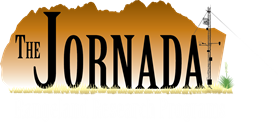| Title | Spatially explicit representation of state-and-transition models |
| Publication Type | Journal Article |
| Year of Publication | 2012 |
| Authors | Steele C, Bestelmeyer BT, Burkett LM, Smith P, Yanoff S |
| Journal | Rangeland Ecology and Management |
| Volume | 65 |
| Start Page | 213 |
| Pagination | 213-222 |
| Date Published | 05/2012 |
| ARIS Log Number | 274351 |
| Keywords | alternative states, ecological sites, geographic information systems, land classification, Soil Survey Geographic (SSURGO) Database |
| Abstract | The broad-scale assessment of natural resource conditions (e.g., rangeland health, restoration needs) requires knowledge of their spatial distribution. We argue that creating a database that links state-and-transition models (STMs) to spatial units is a valuable management tool for structuring ground-based observations, management planning for landscapes, and for housing information on the responses of land areas to management actions. To address this need, we introduce a multi-factor classification system based on ecological sites and STMs that is directly linked to recent concepts of vegetation dynamics in rangelands. We describe how this classification was used as a basis for creating a spatial database and maps of ecological states. We provide an example of how the classification and mapping has been applied in over 1.2 million ha of public rangelands in southern New Mexico using aerial photo interpretation supplemented with existing inventory data and rapid field assessments. The resulting state map has been used by the Bureau of Land Management (BLM) to design landscape-level shrub control efforts, structure and report district-wide rangeland health assessments, and to evaluate locations for energy development. We conclude by discussing options for the development of state maps and their current limitations, including the use of satellite imagery and concepts for defining states. We argue that cataloging ecological states in a spatial context has clear benefits for rangeland managers because it connects STM concepts to specific land areas. State mapping also provides a means to generate and store spatially-explicit data resulting from tests of the propositions in STMs and conservation practices. |
| URL | /files/bibliography/12-022.pdf |
| DOI | 10.2111/REM-D-11-00047.1 |


